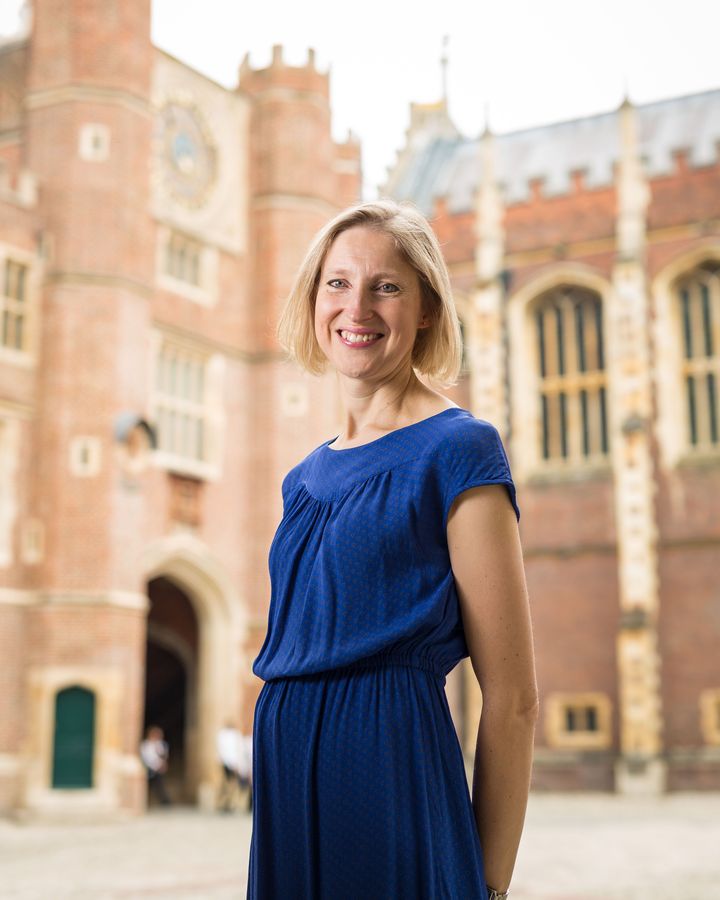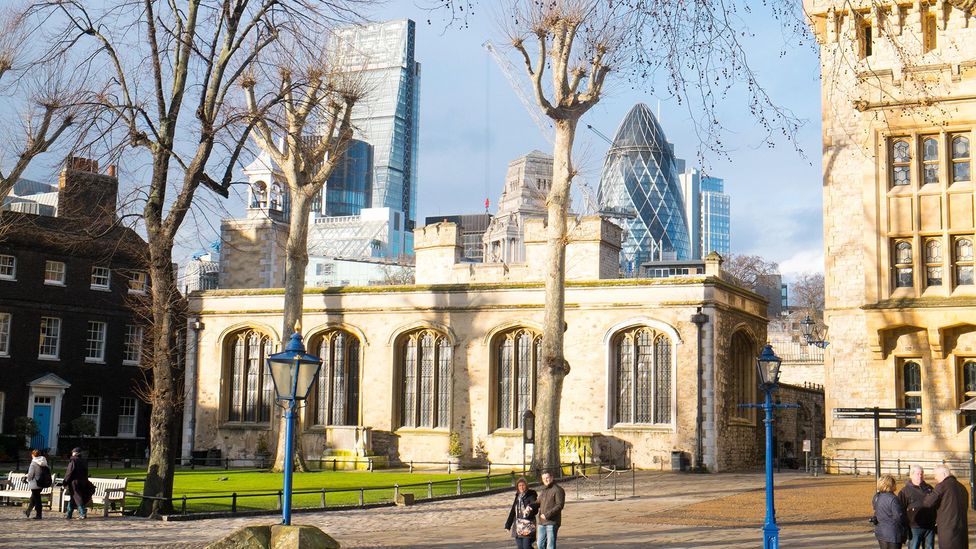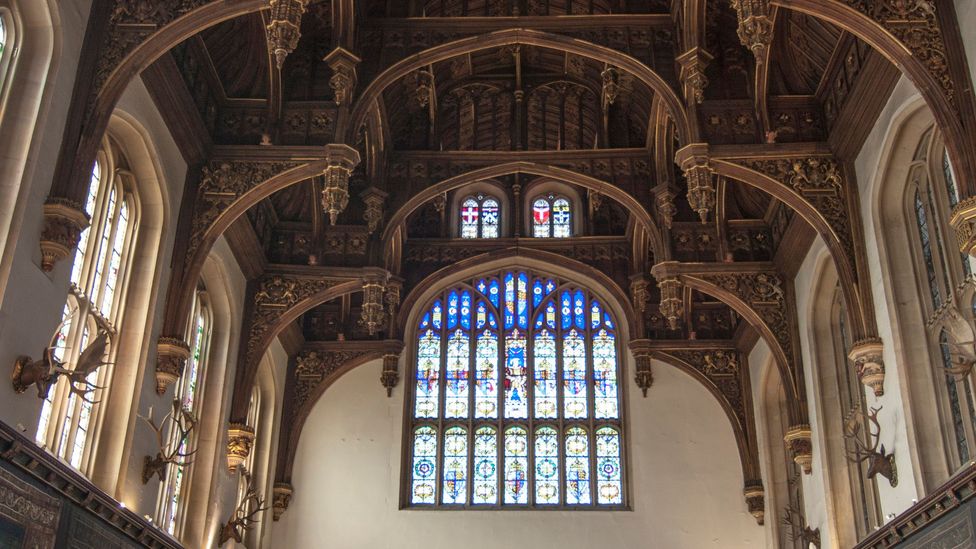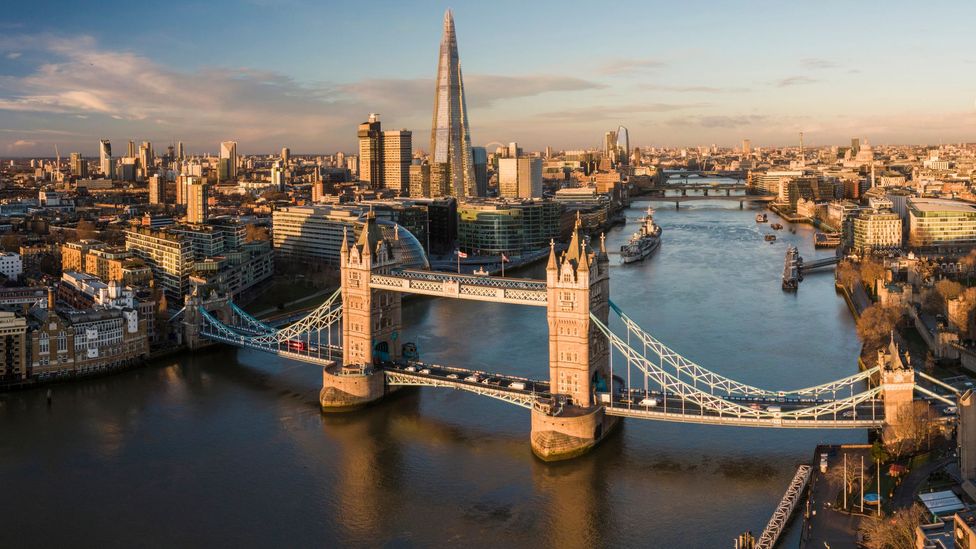London has been home for England's monarchs for more than 1,000 years – and while the British capital has changed significantly over the last centuries, it remains rich with historic royal sites, from palaces and parks to museums and churches. Where should a visitor begin?
There may be no better person to ask than Tracy Borman, historian, joint chief curator for Historic Royal Palaces and author of numerous books about, and inspired by, England's royals, from England's first Queen, Matilda, to famed Tudor King Henry VIII.
Here, she shares fascinating tips and tricks for getting the most out of London's royal sites, including where (and why) to seek out the city's "lost" palaces, why only seeing the Crown Jewels at the Tower should be "treason", and the best way to travel in Tudor footsteps… not to mention how she chose to get married at the "saddest spot on Earth" (and why it's worth a visit).
Let's start with the Tower of London – such a popular site for visitors, and one you've written a whole book about. You called the story of the Tower "the story of England". Why?
With that book, I thought I was writing about the Tower. But I was actually writing about England, because so many national events took place at the Tower that changed history. The Tower begins with the Norman Conquest of 1066 – William the Conqueror has to subdue England somehow, so he builds this mighty fortress – and it continues to be at the heart of affairs well into the 1600s. Even today, it has an important part to play; it's also home to the Crown Jewels.

Tracy Borman is joint chief curator for Historic Royal Palaces (Credit: Historic Royal Palaces)
Ah, the Crown Jewels. Are there other hidden gems (pun intended…) that visitors should make sure to see?
Yes! About 95% of tourists just go straight to the Crown Jewels. Some of them don't see anything else in the Tower, which I think is treason!
Get up close to royal "graffiti" at the Beauchamp Tower
Be awed by Henry VIII's tapestries at Hampton Court's Great Hall
Visit the Jewel Tower for a slice of little-known history
Explore royal artefacts at the British Library's Treasures gallery
Walk the Coronation route from Buckingham Palace to Westminster Abbey
My top recommendation is always the Beauchamp Tower – visitors often just walk past because it doesn't look like much from the outside. It's there that some high-status prisoners were kept, and where they left graffiti. For me, it's like touching history when you see marks left behind by one of the accused lovers of Anne Boleyn, who carved her falcon emblem into the stone. It makes it real.
And there's another less-known corner of the Tower that you have a particularly personal connection to…
The Chapel of St Peter ad Vincula – the tower chapel. It's been called the "saddest spot on Earth" because it's where all the traitors were buried. Three queens of England – Anne Boleyn, Katherine Howard and Lady Jane Grey – were all buried there. Particularly during the Tudor period, this is a busy chapel. And it's where I got married. I wrote a book about Thomas Cromwell and he's buried there and I just thought, "Yeah, I need to get married here."
It's a working chapel. So is St John's Chapel, this beautiful Romanesque chapel inside the White Tower. As a top tip to visitors, that means you can actually attend services there before the Tower opens to the public. It means you've got the Tower to yourself. And you're experiencing history when you're taking part in these in these services that generations of Tower residents have before. People think you've got to have some association with the Tower to come, but you don't. Anybody can come.

The Chapel of St Peter ad Vincula has been called the "saddest spot on Earth" (Credit: Martin Berry/Alamy)
You've written about so many different eras of British history, but you seem to be a particular fan of the Tudors.
Yes, that's the period I always come back to. There's been a lot of criticism lately in the press around, "Why are we all so obsessed with the Tudors?" I think, "For good reason!" It's such a dramatic period, full of larger-than-life characters. You have King Henry VIII, who married six times; you have the Virgin Queen, Elizabeth I. It's the age of Shakespeare and overseas exploration. It's a very self-confident age, a very formative age.
Where would you send a visitor to London who wants to learn more about the Tudor era?
There's no place better than Hampton Court. I am biased, because I work there. But it really gets me every time. It's the largest, best-surviving Tudor palace in the world. And you really feel like you're stepping back into the court of King Henry VIII. It is the finest example of Tudor craftsmanship, but also Tudor confidence.
What's your favourite part of Hampton Court?
The Great Hall is hard to beat. Every time I walk in there, I catch my breath. It was Henry VIII's pride and joy – he inherited the palace from his advisor, Cardinal Wolsey. Even though it was already huge, typical Henry – the first thing he did was to extend it. So he built the Great Hall. Today, we still have Henry's tapestries hanging on the walls. They're second in value only to the Crown Jewels. Then there are traces of some of the wives; in particular, Anne Boleyn, because it was built to honour and celebrate Anne as queen. We have her falcon emblem in the ceiling, as well as her intertwined initials with Henry. It's those little details that give me shivers down the spine.

Hampton Court's Great Hall has an extravagantly decorated hammer-beam roof (Credit: Ivan/Getty Images)
What are the other historic royal hotspots a visitor to London shouldn't miss?
It would be rude to ignore Westminster Abbey. It's the site of coronations, of royal funerals. Many royals are buried there. My own personal favourite, Queen Elizabeth I, has the most magnificent tomb there. It's a jaw-dropping place to visit.
What else should a visitor to Westminster Abbey make sure to see?
If you're visiting Westminster, there is a more of a hidden gem of a royal palace just nearby: the Jewel Tower. It's opposite the Houses of Parliament, and it dates back to the 14th-Century reign of King Edward III. The lovely thing about the Jewel Tower is that it's one of only two buildings to survive from the original Palace of Westminster that burnt down in the 1800s. You can go upstairs and get an amazing view of the Houses of Parliament. It's a tiny little tower; you don't need long to visit it. But it's a little royal gem. People make a beeline for Westminster Abbey and don't even notice it.
What are some other "lost" palaces tourists can visit?
Whitehall was the largest palace in in Tudor England. Today, the only bit that survives is the Banqueting House – it really dates from the reign of King James I, who ruled until 1625, and he used the parties for these elaborate Jacobean entertainments called masques. But it's also then where his son and successor Charles I was beheaded in 1649, just outside. It's a bit of dark royal history. And it's right in the heart of things, just down the road from the prime minister's office at Downing Street.

The Jewel Tower is one of just two buildings to survive from the original Palace of Westminster (Credit: Stuart Black/Alamy)
Any you'd suggest that are outside of London's tourist centre?
Yes, I'd really recommend a trip to Greenwich. Even though the old Tudor palace no longer exists, you can still go down to the riverside and see the old Tudor pier. You also can see the Queen's House built in the early 1600s for Anne of Denmark, the wife of King James I.
I'd also suggest Richmond Palace. It was one of the palaces built by King Henry VII, who founded the Tudor dynasty, and it was particularly beloved by his granddaughter, Queen Elizabeth I. She called it her "warm box", because it had this quite sophisticated heated system – she always felt the cold. She loved Richmond, and, in her old age, she chose to die at Richmond. Like so many of the palaces, it fell prey to fire. But what you can see now is the rather splendid gate house; if you follow that through, there is a courtyard, and some of bricks from the palace were used in some of the houses.
Richmond-upon-Thames isn't right in the centre of London – it's a borough in the south-west. If you want to really follow in historic royal footsteps, how would you suggest getting there?
All of the big London palaces were on the Thames, because that's how people travelled – by river was much more convenient and faster than by road. So it's lovely to walk along the Thames Path either from Kew [home of the Royal Botanic Gardens], or from the other direction.

A boat trip up the Thames takes in many of London's royal sights (Credit: Ben Pipe Photography/Getty Images)
Or, if you have a bit of time, I really recommend going by boat. Turks do a lot of historic river trips – they go from Hampton Court, Richmond and Kingston. You can go from Westminster, or, if you have the time, from Greenwich. You go past the Tower, and heading west, you pass the neighbourhood of Chelsea, which was where Henry VIII's last wife Catherine Parr had her home. Then, eventually, you get to Richmond and Hampton Court. It takes three or four hours, but I would really recommend it. You see London as the Tudors, in particular, would have seen it.
Lots of palaces to see, and ways to see them. What about royal parks?
Yes! The royals did love their parks, a lot of which started out as hunting grounds. There's Hyde Park, for example. I also would recommend Kensington Gardens; you learn a lot about the Georgians there. And, of course, Kensington Palace, which is very much synonymous with the modern royals, and Princess Diana and William and Kate.
Any museums you'd suggest with particularly royal connections?
The V&A Museum is amazing. I'd also suggest the Treasures gallery at the British Library, its permanent exhibition. It's got letters from kings and queens, it's got execution warrants, it's got religious books owned by monarchs – dazzling, illuminated manuscripts.
Also the newly reopened National Portrait Gallery – they've had this huge refurbishment over the last three years. It's like looking through the family album of monarchs. You can see them all on the wall.

Kensington Palace is the official London residence of TRH The Prince and Princess of Wales and their children (Credit: W.Buss/Getty Images)
As a royal historian, is there a work of art at the National Portrait Gallery you find yourself returning to again and again?
There is! It's the one of [King Henry VIII's advisor] Thomas Cromwell – I love that one. There's also Elizabeth I's coronation portrayed; that's pretty hard to beat, as well.
Finally, we can't end our conversation without mentioning the Coronation. For visitors who want to relive the experience, what's a good way to do it?
I think it's quite nice to walk the processional route from Buckingham Palace to Westminster Abbey – right in the footsteps of that Coronation procession. Just choose a day of nicer weather than it was on the 6 May.
© OfficialAffairs